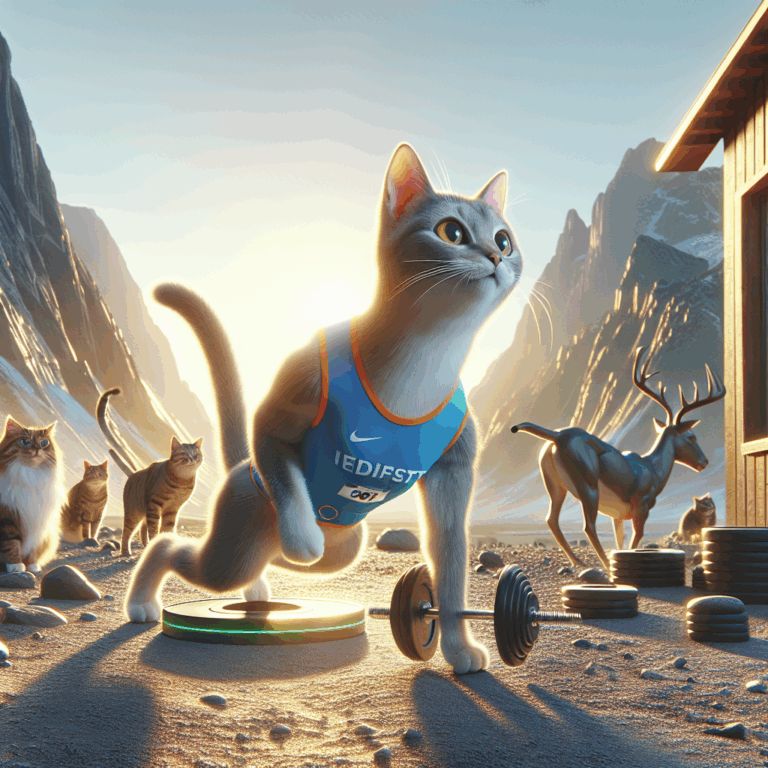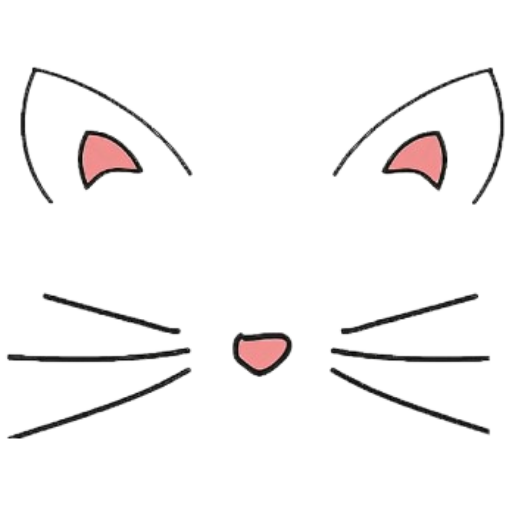Feline Fitness: Understanding the Athletic Prowess of Cats
Cats have long been admired for their grace and agility, attributes that seem almost supernatural to their human admirers. Their ability to leap several times their body length, land with precision, and sprint with remarkable speed is not only fascinating but speaks volumes about their evolutionary history and physiological adaptations. As more pet owners become interested in understanding what makes their feline friends such remarkable athletes, researchers are delving into the science behind their agility and strength.
Cats, both wild and domestic, are natural-born hunters. This predatory instinct has shaped their physical form over millennia. The domestic cat, despite its smaller size, shares a lot in common with its larger cousins, the big cats of the wild. For instance, the structure of a cat’s spine is highly flexible, allowing them to twist and turn their bodies with ease. This flexibility is key to their ability to leap high into the air, as it allows them to store energy and release it explosively.
The powerful hind leg muscles of cats act as a springboard, propelling them forward with immense force. This is complemented by their retractable claws, which provide grip and traction. When a cat leaps, it does so in a way that is calculated and precise, often landing on a target with pinpoint accuracy. This same precision is evident in their ability to balance on narrow surfaces, a skill that has been honed over generations of navigating tight spaces in pursuit of prey.
Moreover, cats are equipped with a unique vestibular system that aids in balance and spatial orientation. This system, located in the inner ear, is finely tuned to help cats maintain equilibrium during their acrobatic feats. It’s why cats can walk along a fence or ledge without faltering, and how they manage to right themselves during a fall—a phenomenon known as the “righting reflex.”
Interestingly, the athletic prowess of cats isn’t solely for hunting. Play, a crucial aspect of a cat’s life, mimics hunting behavior and serves multiple purposes. It not only keeps cats physically fit but also mentally stimulated. Engaging in play allows domestic cats to channel their energy, preventing obesity and other health issues. Toys that mimic prey, such as feathered wands or laser pointers, can stimulate a cat’s predatory instincts, offering exercise and enrichment.
The importance of maintaining a cat’s athletic abilities has not gone unnoticed by veterinarians and pet owners alike. As more cats live indoors, ensuring they have opportunities to exercise is crucial. Climbing trees, scratching posts, and interactive toys are all essential components of a cat-friendly environment. These tools not only promote physical health but also help reduce stress and anxiety, contributing to overall well-being.
In recent years, the concept of feline agility competitions has gained popularity, showcasing the athletic skills of domestic cats in a structured environment. These events are designed to highlight the natural abilities of cats as they navigate obstacle courses, jump through hoops, and demonstrate their dexterity. Such competitions not only provide entertainment but also reinforce the bond between cats and their owners through shared activities.
As we continue to unravel the mysteries of feline agility, one thing remains clear: cats are extraordinary creatures whose athleticism is a testament to their evolutionary success. Understanding and appreciating this aspect of their nature not only enhances our relationship with them but also enriches their lives as beloved companions. Whether they are leaping after a toy or curling up for a nap, cats remind us of the beauty and elegance found in perfect harmony with the wild.

Cats have long been admired for their grace and agility, attributes that seem almost supernatural to their human admirers. Their ability to leap several times their body length, land with precision, and sprint with remarkable speed is not only fascinating but speaks volumes about their evolutionary history and physiological adaptations. As more pet owners become interested in understanding what makes their feline friends such remarkable athletes, researchers are delving into the science behind their agility and strength.
Cats, both wild and domestic, are natural-born hunters. This predatory instinct has shaped their physical form over millennia. The domestic cat, despite its smaller size, shares a lot in common with its larger cousins, the big cats of the wild. For instance, the structure of a cat’s spine is highly flexible, allowing them to twist and turn their bodies with ease. This flexibility is key to their ability to leap high into the air, as it allows them to store energy and release it explosively.
The powerful hind leg muscles of cats act as a springboard, propelling them forward with immense force. This is complemented by their retractable claws, which provide grip and traction. When a cat leaps, it does so in a way that is calculated and precise, often landing on a target with pinpoint accuracy. This same precision is evident in their ability to balance on narrow surfaces, a skill that has been honed over generations of navigating tight spaces in pursuit of prey.
Moreover, cats are equipped with a unique vestibular system that aids in balance and spatial orientation. This system, located in the inner ear, is finely tuned to help cats maintain equilibrium during their acrobatic feats. It’s why cats can walk along a fence or ledge without faltering, and how they manage to right themselves during a fall—a phenomenon known as the “righting reflex.”
Interestingly, the athletic prowess of cats isn’t solely for hunting. Play, a crucial aspect of a cat’s life, mimics hunting behavior and serves multiple purposes. It not only keeps cats physically fit but also mentally stimulated. Engaging in play allows domestic cats to channel their energy, preventing obesity and other health issues. Toys that mimic prey, such as feathered wands or laser pointers, can stimulate a cat’s predatory instincts, offering exercise and enrichment.
The importance of maintaining a cat’s athletic abilities has not gone unnoticed by veterinarians and pet owners alike. As more cats live indoors, ensuring they have opportunities to exercise is crucial. Climbing trees, scratching posts, and interactive toys are all essential components of a cat-friendly environment. These tools not only promote physical health but also help reduce stress and anxiety, contributing to overall well-being.
In recent years, the concept of feline agility competitions has gained popularity, showcasing the athletic skills of domestic cats in a structured environment. These events are designed to highlight the natural abilities of cats as they navigate obstacle courses, jump through hoops, and demonstrate their dexterity. Such competitions not only provide entertainment but also reinforce the bond between cats and their owners through shared activities.
As we continue to unravel the mysteries of feline agility, one thing remains clear: cats are extraordinary creatures whose athleticism is a testament to their evolutionary success. Understanding and appreciating this aspect of their nature not only enhances our relationship with them but also enriches their lives as beloved companions. Whether they are leaping after a toy or curling up for a nap, cats remind us of the beauty and elegance found in perfect harmony with the wild.



28 thoughts on “Feline Fitness: Understanding the Athletic Prowess of Cats”
This insightful article beautifully highlights the remarkable agility and strength of cats, providing a deeper appreciation for our feline companions.
It’s great to hear that you enjoyed the article and found it insightful. Cats truly are fascinating creatures with incredible abilities.
While the article highlights interesting aspects of feline agility, it could have delved deeper into the genetic factors that contribute to these abilities. A more detailed exploration of how domestic cats compare genetically to their wild counterparts would have provided a more comprehensive understanding of their athletic prowess.
This article provides insightful information on the remarkable agility and capabilities of cats.
It’s great to see that you found the information on feline agility and capabilities insightful. Cats truly are fascinating creatures with their unique athleticism and adaptability.
This post provides insightful information on the fascinating agility and natural abilities of cats.
It’s great to see appreciation for the incredible agility and natural abilities of cats. They truly are fascinating creatures with remarkable skills.
This article provides an informative look into the fascinating physical abilities and evolutionary adaptations of cats.
This article provides an informative look into the remarkable agility and strength of cats, highlighting their evolutionary and physiological adaptations.
It’s great to see the article highlighting the fascinating aspects of cat agility and strength. Their evolutionary and physiological traits are truly intriguing!
The article certainly provides an interesting look into the remarkable agility and strength of cats. Their evolutionary history and physiological traits indeed contribute to their impressive abilities. It’s fascinating to consider how these aspects not only aid them in hunting but also enhance their overall well-being, especially as more cats live indoors. The attention to their physical and mental stimulation through play and exercise is an important aspect for pet owners to consider. Feline agility competitions sound like a great way to showcase and celebrate these natural skills.
This post wonderfully highlights the fascinating physical abilities of cats and their importance for both their health and our appreciation of them.
This post brilliantly highlights the natural athletic abilities of cats, showcasing their grace and agility in a fascinating way!
Cats truly are amazing athletes with their incredible leaps and agile movements!
Great insights into the fascinating agility and strength of our feline friends!
This insightful post highlights the remarkable agility and grace inherent in our feline companions, truly showcasing their natural athletic abilities.
While the post highlights cats’ impressive agility, it overlooks the need for more detailed exploration of their evolutionary adaptations.
Your point about exploring evolutionary adaptations further is insightful. Delving deeper into how these adaptations have shaped feline agility could certainly add an interesting layer to the discussion. It’s fascinating how evolution has crafted such remarkable skills in cats!
What a fascinating exploration of the natural abilities cats possess, offering insights into their agility and strength!
It’s great to hear you found the exploration of feline agility and strength fascinating. Cats truly are remarkable creatures with their impressive natural abilities!
Absolutely, cats are indeed remarkable with their agility and strength. Their natural abilities never cease to amaze!
Fascinating insights into how cats’ natural agility and strength contribute to their overall well-being!
This insightful post highlights the remarkable agility and strength of cats, showcasing their evolutionary adaptations and the importance of maintaining their physical health.
It’s great to see appreciation for the fascinating agility and strength of cats. Their evolutionary adaptations truly make them incredible creatures, and it’s essential to support their physical health.
This post provides an interesting exploration into the natural agility and physical capabilities of cats.
This article provides an insightful exploration into the natural athletic abilities and evolutionary traits of cats.
Thank you for sharing such insightful information about the incredible agility and strength of our feline friends.
This article brilliantly highlights the remarkable agility and grace of cats, offering valuable insights into their physical capabilities and evolutionary traits.
Comments are closed.